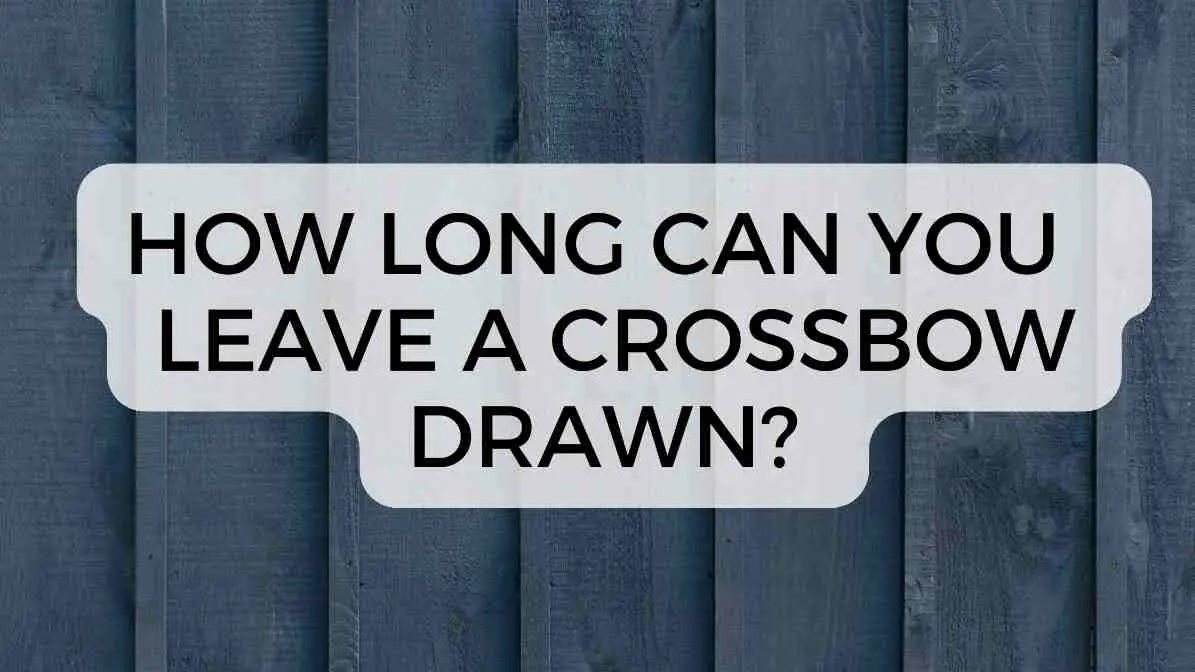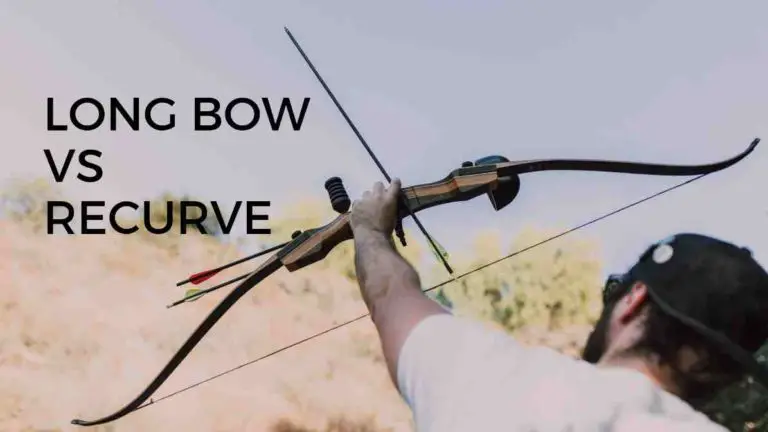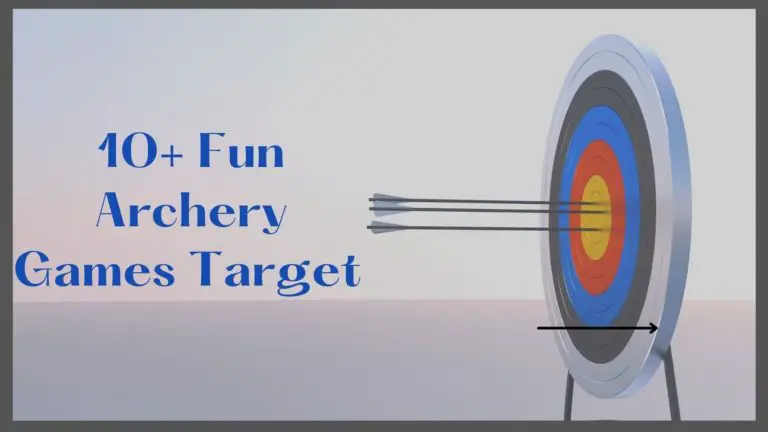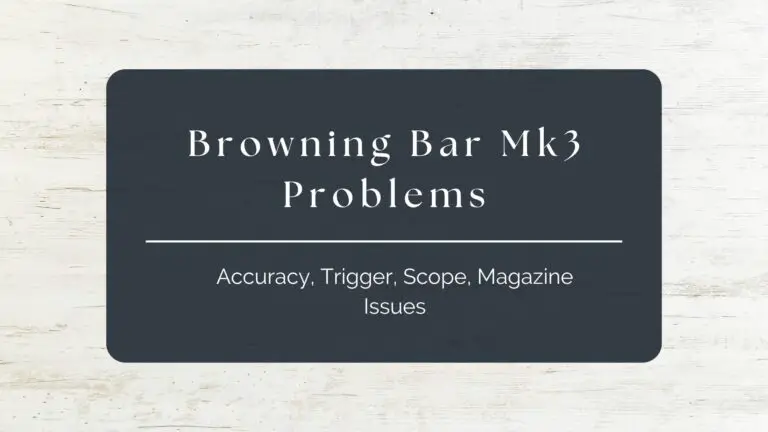How Long Can You Leave a Crossbow Drawn? Updated Guide (2024)
It is possible to hold crossbows in a cocked position for a long time. Archery experts, on the other hand, recommend only using your arrows for a single day of hunting. Strings can pull apart if they are left cocked, posing a threat to people and objects. How long can you leave a crossbow drawn?
Shooting System
Safety and cocking mechanisms have always stayed the same. There is a question about how long you can keep the crossbow drawn. Because there aren’t many occasions where you need to have your crossbow drawn for days at a time, this isn’t an issue.
Proper use of a crossbow
Even yet, novice hunters and archers may not know how to correctly use a crossbow. There are times when the archer does not remember to uncock their crossbow and it fires while they are asleep, either due to a mishap or due to negligence on their part.
To avoid this from happening, make sure you understand how to use your crossbow properly. Cocking a crossbow correctly is essential to accomplishing this.
Recommended: How Hard is it to Load a Crossbow? Safety Guide
It’s time to draw the Crossbow
The crossbow must be cocked before it can be fired. During the cocking operation, you insert the bolt into the crossbow, pull the string, and prepare the crossbow for firing.
To use the crossbow, you’ll first need to cock it. Cocking the crossbow is the process of inserting the bolt, tugging the string, and preparing the crossbow for use.
Things to consider
The most important thing to remember while using a crossbow is that you need to make sure that the bolt doesn’t go off at the wrong moment or in the wrong place. If you do that, you may injure someone else, especially if you’re hunting in a group with other hunters. That’s why each crossbow has a safety device built in.
Safety Mechanism
You can prevent the bolt from leaving too early thanks to the safety mechanism. Inexperienced archers frequently have difficulty synchronizing the release of the safety with the actual shooting process. During the hunt, however, the crossbow must be kept in a secure location. You and your companions would be in significant danger if you didn’t have the protection.
Chances of Accident
Despite this, many people prefer to leave their crossbows in a safe position. When the archer isn’t around, it’s risky to have a crossbow in the house because it could accidentally discharge and injure someone else.
As a result of this, there is a risk of crossbows breaking because their limits are being tested. To avoid this, the best course of action is to become familiar with the crossbow’s capabilities.
Crossbow’s Practical Limitations
There are limitations to the crossbow’s power. It’s important to know what a weapon can and can’t do when using an archery weapon. Bows and crossbows are two entirely distinct things. When you grasp a bow, you must release it when you’re ready to shoot, and you’ll want to do so quickly.
Limitation 1:
With a bow, you’d have to let go of the bow and walk about with it completely drawn to get around. This can be extremely difficult and impractical, which is why crossbows have become so commonplace. There is no need for you to draw your crossbow every time you spot prey with one. Once you’re ready to shoot, you just pull the trigger after cocking the gun.
Limitation 2:
However, just because you’re able to keep it cocked doesn’t mean that you should. No matter how well you care for it or how much you push it, a crossbow will eventually break. If you continue to abuse the weapon, the strings and cocking system will wear out.
The Hunting Scene
In the woods, your group has been scouting for prey for several hours. On the past few occasions, you’ve seen the deer and cocked the crossbow and left it on safety; nevertheless, the deer has yet to appear.
Scene 1
You’re making your way through the day one step at a time. Despite the wind’s interference, your progress will not be slowed to a standstill. You keep walking, alert to the possibility of being ambushed by your prey at any moment. You remove the safety and pull the trigger when something unexpectedly jumps out of the brush.
You blew it, and now you know it was simply the wind that caused the mishap. Your crossbow is loaded with another bolt, and with no hesitation, you draw it and secure the safety. The prey’s trail is still clearly visible on the ground, so you keep following it.
Scene 2
Now that the sun is shining brightly, it’s clear that you won’t be getting much closer to your goal of the day. On your way back home, you might notice that your crossbow is still on security and ready to fire.
However, you’re already out the door, and you don’t want to put your feet up just yet to make any adjustments. You get home and decide to leave it as is.
There is nothing more to it than putting it away and going to sleep. To be fair to yourself, you’ve done this with the crossbow numerous times previously, most notably during a hunt.
Scene 3
A loud, piercing noise wakes you up in the middle of the night. To your horror, you discover that your crossbow’s strings are shattered and the bolt is swinging from the wall. This is one of the most compelling arguments against misusing your crossbow.
Maintaining the Security of Your Crossbow
Controlling your crossbow properly is the only way to ensure that it doesn’t go off in the wrong direction. Even when the bolt has been loaded and is ready to fire, the gun should be kept in safety mode. If the bolt is not loaded, there is no need to engage the safety.
- Pull the trigger and aim for the target when you have a clear shot. In the event of a miss, place the crossbow on the ground with the trigger facing away from you. This will prevent further damage. Draw the bow after you’ve loaded the bolt.
- Then, put the safety back on and get ready for the next round of shooting! Once the hunt is over, you must quickly remove the safety and remove the bolt.
- Disengage the crossbow’s safety and remove the bolts from the shooting mechanism before storing it in its unloaded state.
Afterward, you are entirely safe and out of danger. As a bonus, your crossbow will be more durable and last longer if you follow these instructions. This is the best way to use the bow safely for an extended period. You can determine the speed of the arrow here.
FAQs
Is it bad to leave a crossbow cocked?
Yes to leave a crossbow cocked for a longer period causes stretching of strings.
How long can you leave a crossbow cocked?
To prevent early stretching of the string and cables, don’t leave your crossbow cocked for more than 24 hours at a time.
How long can a crossbow stay loaded?
A crossbow can stay loaded for 24 hours. After that premature stretching occurs.




